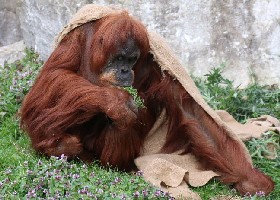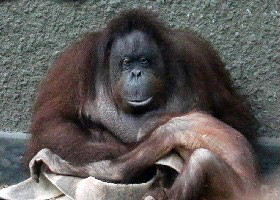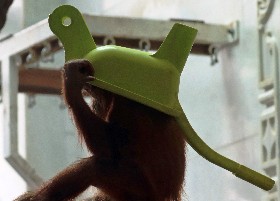Orangutan Pongo pygmaeus/abelii/tapanuliensis
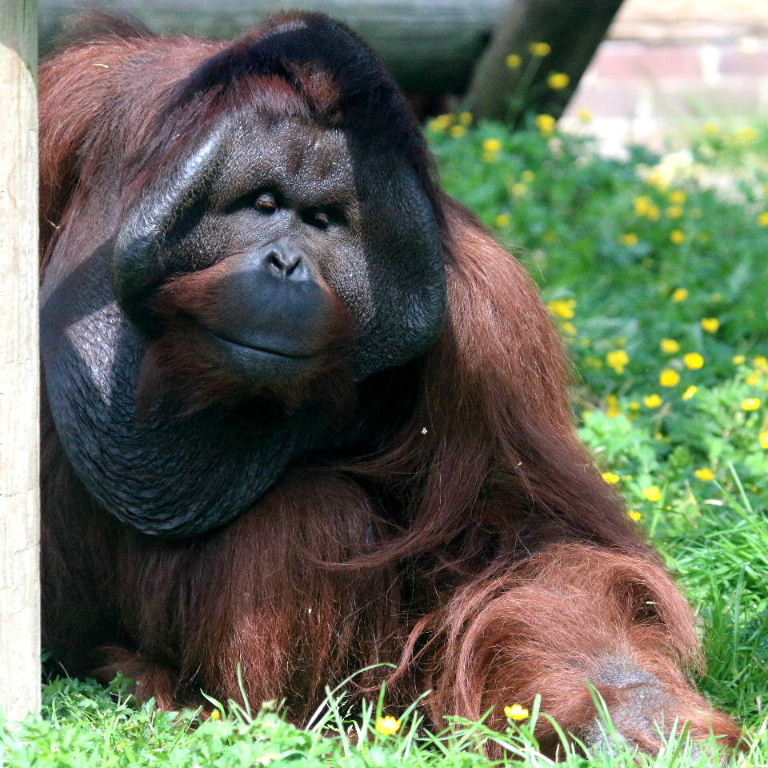 Adult male.
Adult male.
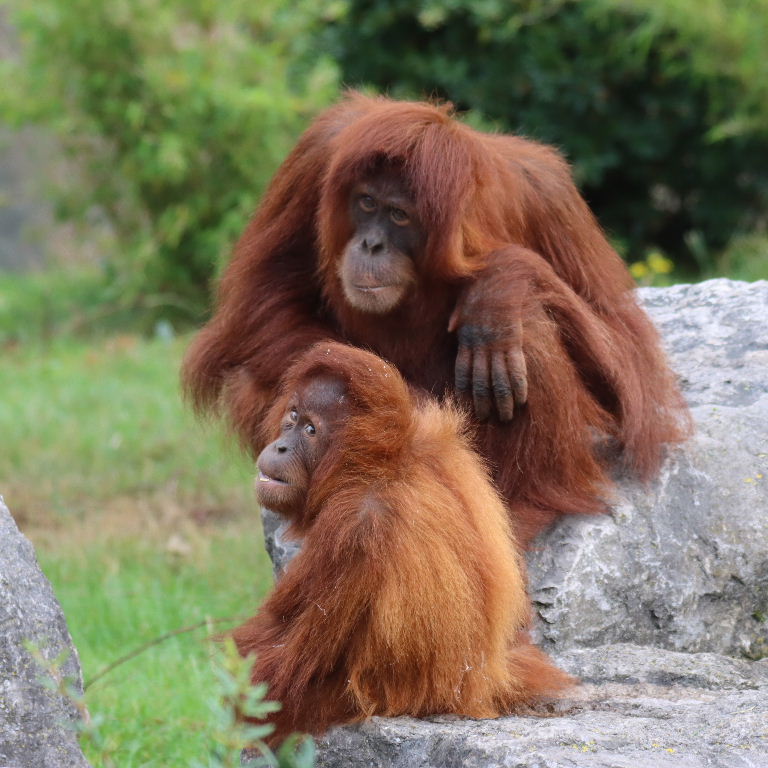 Female with youngster.
Female with youngster.
The critically endangered Orangutan (also Orang-utan) suffers habitat loss (including deliberate forest fires and
clearance for palm oil) and poaching in its remaining native areas of Borneo and Sumatra.
They are "great apes", the only non-human great apes not native to Africa. They are close to human DNA and highly intelligent,
possibly more so than Chimpanzees and Gorillas.



Split into two species in 1996, P. pygmaeus (above)
is native to Borneo and P. abelii to Sumatra. A third species, the Tapanuli Orangutan,
P. tapanuliensis, from a small region of Sumatra, was described in 2017.
The Bornean has darker hair, fatter male face flanges and spends more time on the ground. Both Sumatran and
Tapanuli have golden orange hair, rounder/flatter male face flanges and spend more time in trees (out of reach of tigers).
Tapanuli has aspects of both Sumatran and Bornean; there are only a few hundred left, vulnerable to further
deforestation, capture and inbreeding.
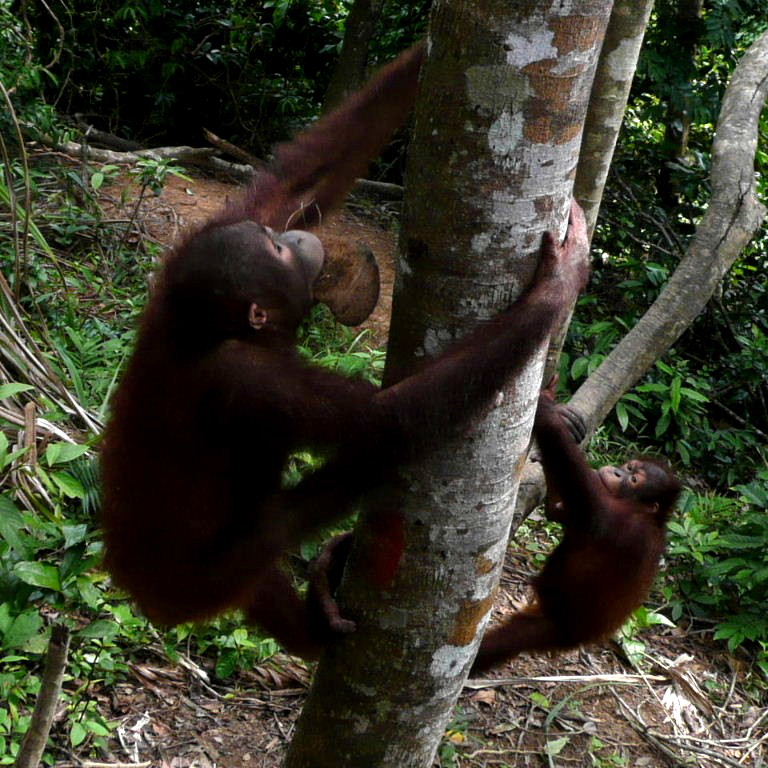
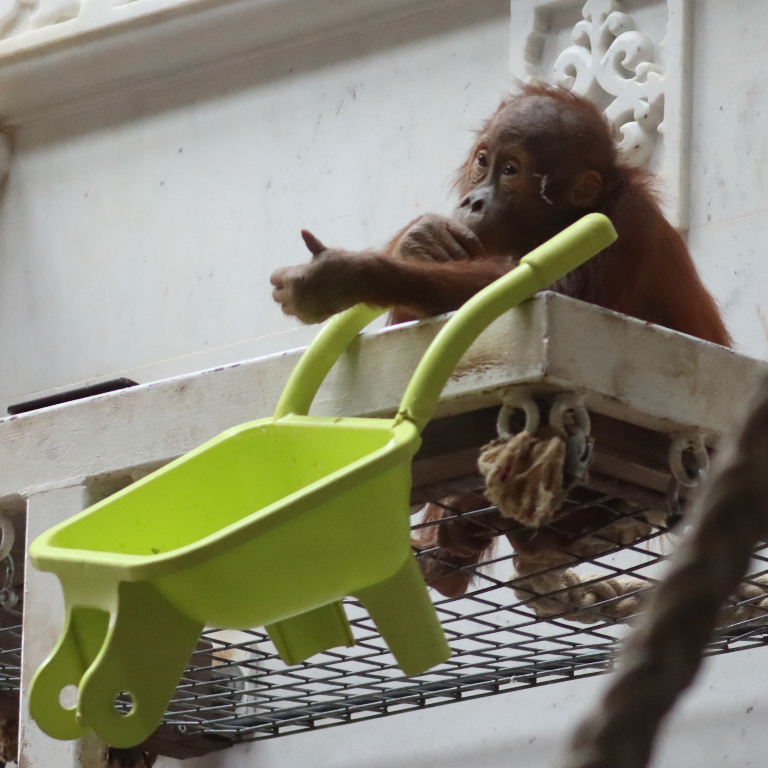
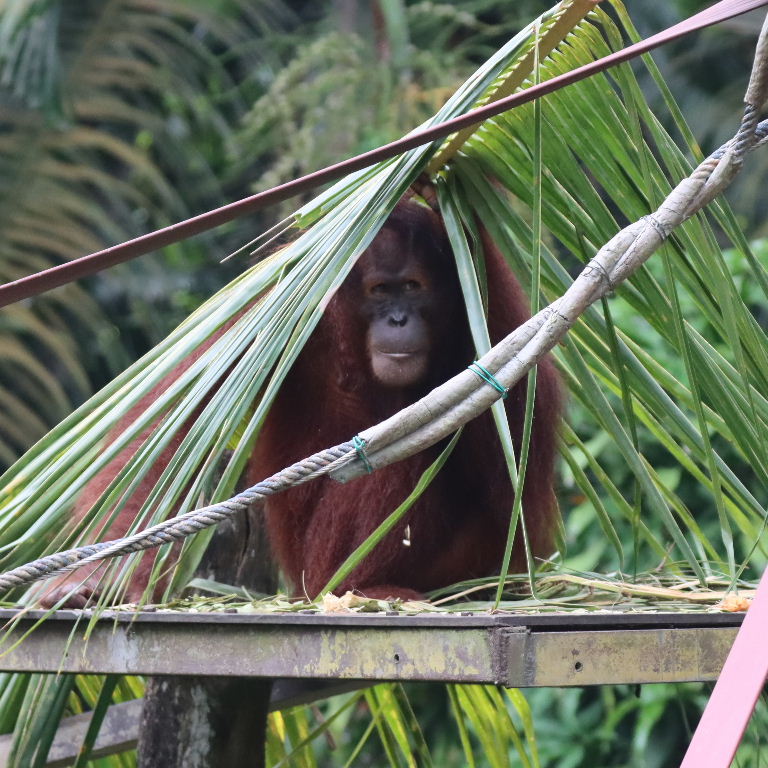
"Orang utan" means man of the forest. They used to inhabit the Asian mainland including China.
They are adept at tool use and build elaborate nests in the trees to sleep at night.
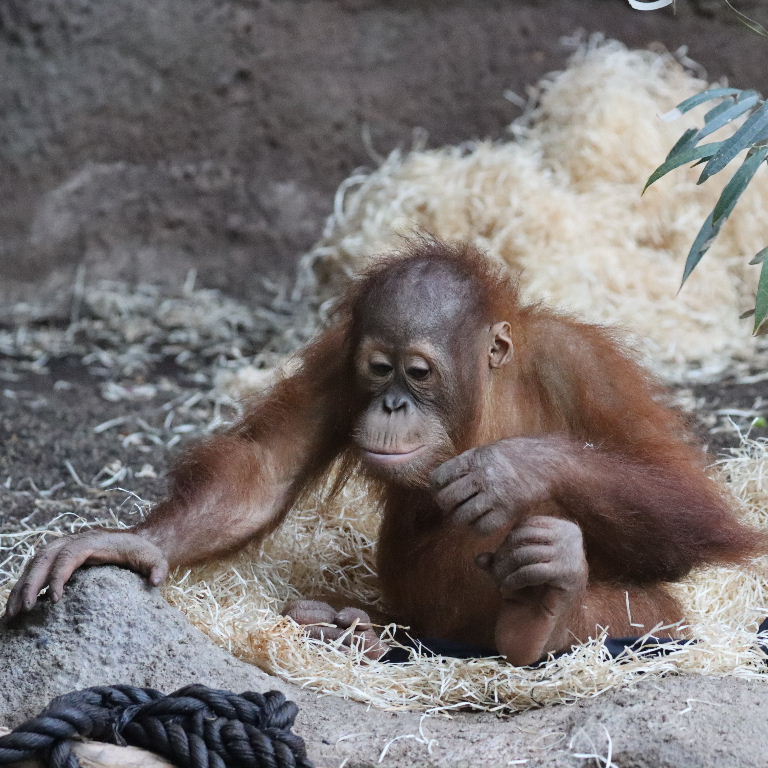
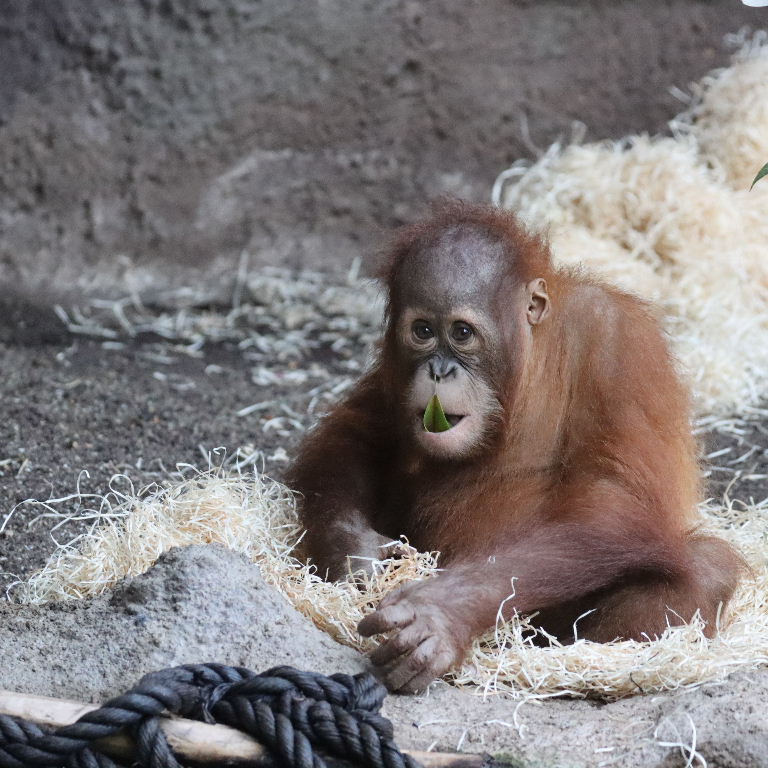
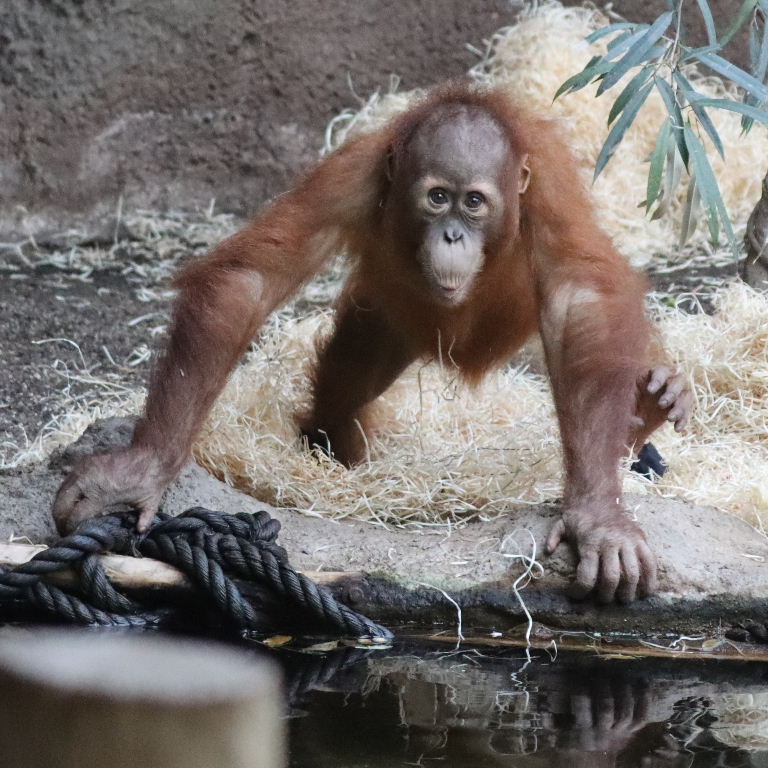
Diet is mainly fruit but they use twigs to reach termites and larvae.
It is said that they have watched humans cross a river in boats and copied untying a boat and crossing on their own.
 Baby Orangutan.
Baby Orangutan.
 Juvenile Bornean.
Juvenile Bornean.
 Juvenile.
Juvenile.
Unlike the other Great Apes, Orangutans are, appropriately, orange (coppery brown or ginger).
Their armspan (some 7 feet or 2 metres for adult males) is greater than their height (male c. 4.5 ft/1.4 m).
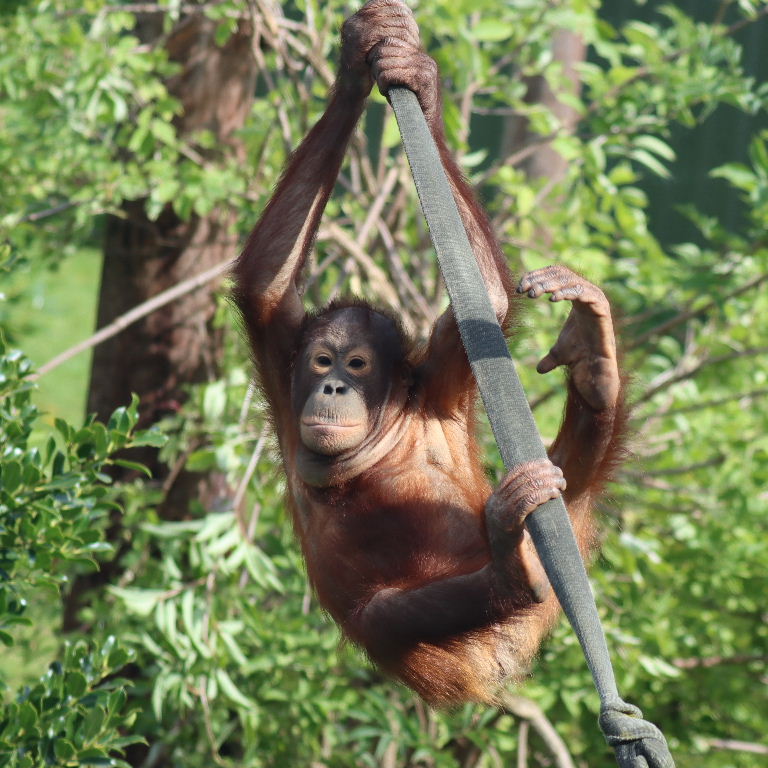


They spend most of their time in trees. The adult males have throat sacs which can make
calls travel for some 1.2 miles (2 km) through the forest.
 Mother with youngster.
Mother with youngster.
 Male zoo hybrid. He likes to read magazines.
Male zoo hybrid. He likes to read magazines.
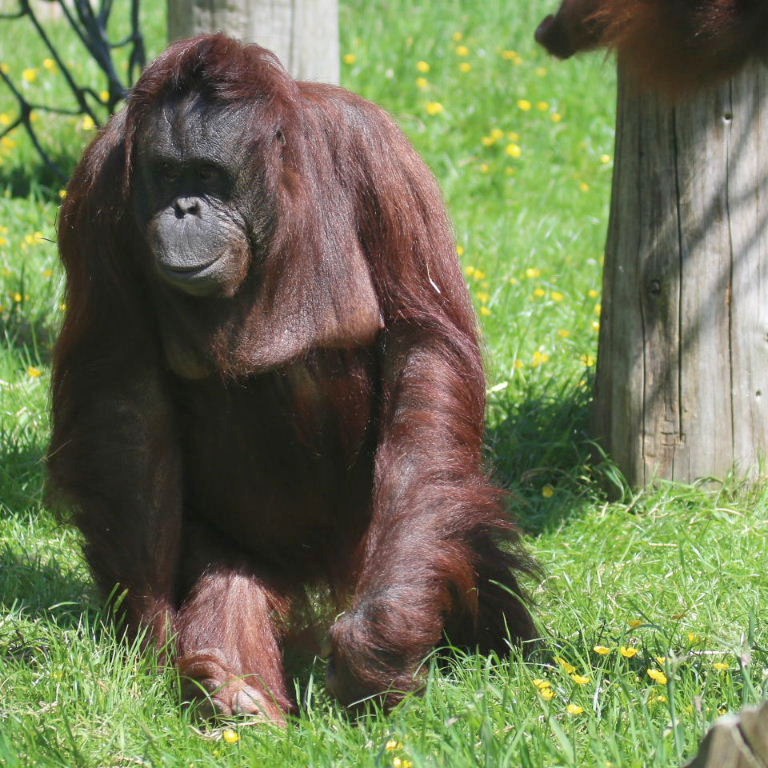
The least social of the great apes, they are generally solitary or mothers with single offspring which
stay with her 6-7 years; she may breed at 8 year intervals. They live for some 50 years in the wild. Many in zoos are hybrids.
There are links to pure Sumatran and pure Bornean species below.


